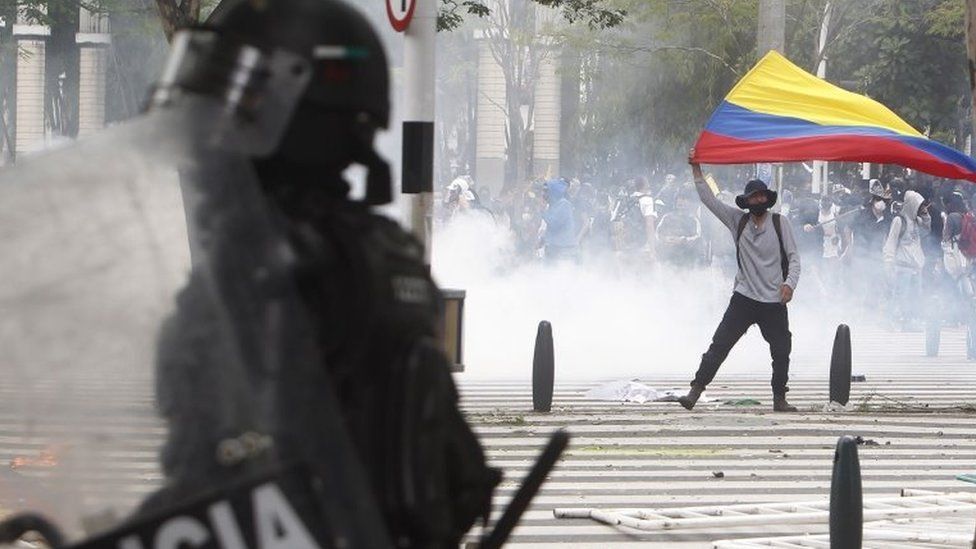Colombia's nightmare: Civilians and police continue to face off in deadly nationwide conflict
Special forces unit ESMAD faces international scrutiny as protests escalate

Protester standing up to ESMAD forces / Photo Credit: EPA
COLOMBIA. Cali: What started as peaceful protests last week organized by labor unions opposed to new tax reforms has spiraled into a lethal standoff between police and civilians trying to survive the economic fallout initiated by the COVID-19 lockdowns.
On Tuesday, a group of dissenters set fire to a police station in Bogota, trapping an estimated 10 to 15 officers inside, who narrowly escaped being burned alive. Mayor Claudia López released a statement regarding the incident on Twitter, "The 22 human rights commissions we activated have been preventing and protecting abuses to citizens, but tonight's violent escalation is brutal."
Proposed tax reforms ignited a powder keg of rebellion
While the government claimed that collecting more tax revenue from its already struggling population is the key to crawling out of a financial hole; the measure proved to be a tone-deaf solution that ignored the increasingly desperate plight of the people. As many already struggle to buy just bread and eggs for their family, a parallel can be seen between the proposed tax reform and the old adage of attempting to squeeze blood from a rock.
However, the bigger economic picture still looms at large. Colombia's gross domestic product (GDP) dropped by 6.8% last year, which is the worst crash the nation has endured in half a century.
Despite President Iván Duque announcing his withdrawal of the proposed reform on Sunday, the demonstrations continue along with violent encounters between police special forces units and civilians. Emboldened protesters are now demanding improvements to the educational, health, and pension systems.
The role of ESMAD in the surge of violence
As is the case with many countries, including the United States, a special militarized division of the police is used to control large protests. Colombia's Mobile Anti-Riot Squad (ESMAD) was created in 1999 under President Andrés Pastrana and has faced multiple accusations of unwarranted use of excessive force almost yearly since.
In the past week, ESMAD has been held responsible for the deaths of at least 19 protesters. Much of the nation's violent conflicts center around the city of Cali in the south. The spokesperson for the United Nations High Commissioner for Human Rights, Marta Hurtado, explained the UN had received reports of human rights defenders being harassed and threatened as well as protesters being injured and killed in Cali. The UN also claimed to be "deeply alarmed" by the deadly clashes.
Colombia's Minister of Defense, Diego Molano, said complaints have already been filed in this recent wave of protests against ESMAD for actions of violence against the demonstrators. The burning of Bogota's police station on Tuesday is thought to be retaliation for the violence initiated by attempts at urban pacification by ESMAD.
To date, hundreds of ESMAD officers have been prosecuted for disciplinary infractions over the years. As of 2015, the prosecutor's office had processed almost 40,000 cases. Only 18 of these resulted in convictions, according to official reports. In the meantime, fires continue to burn and the clock is ticking for President Duque's administration while the country stands at the precipice of civil war.



